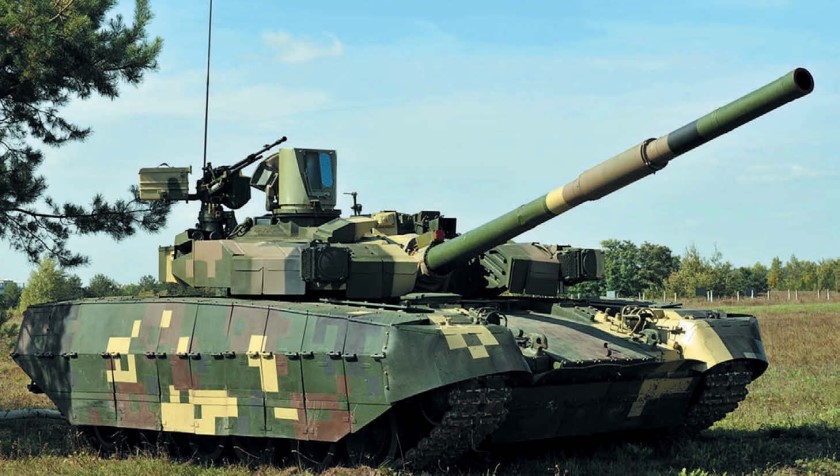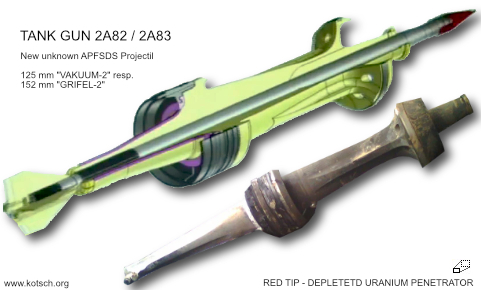What is Russia’s T-90M Tank and How Does It Stack Up Against NATO’s Top Armor?, by Ilya Tsukanov for SputnikNews. 01.28.2023.
NATO’s proxy war against Russia in Ukraine saw another escalation this week, with the Western alliance promising to send over 150 of the Western alliance’s current-gen tanks – the Leopard 2 and the Abrams. How does Russia’s most advanced third-gen tank, the T-90M Proryv, compare against these heavy weapons? Sputnik investigates.
Although German and US officials have clarified that it will take “months” for their promised armor to arrive in Ukraine, Western media and defense analysts are already salivating at the prospect of these tanks meeting their Russian counterparts on the battlefield for the first time.
"Abrams and Challenger tanks ‘made to beat Russia’: Why muddy Ukraine is ideal warzone,” one outlet gushes. “Abrams, Leopard and Challenger 2 vs. T-72: How Western Tanks Compare to Russia’s Armor,” another title reads, apparently taking their audience for children and comparing the early 1970s-era Soviet-era second generation tank to third-gen NATO armor introduced between a decade and two-and-a-half decades later.
Only a handful of media have actually focused on the capabilities of the T-90 – Russia’s most modern tank, at any length, with some dismissing it as “essentially a late-model T-72 hull and turret” with an upgraded engine. One outlet begrudgingly admits that “some versions of the T-90…are even better than their NATO opposites, with a superior gun and anti-tank missile system,” but assures that superior Ukrainian training will prevail.
Is that really the case?
What is the T-90 Main Battle Tank?
The T-90 is the first series of MBTs (or simply ‘main tanks’ under Russian military nomenclature) to be manufactured almost entirely in the post-Soviet period. The tank was designed in the mid-to-late 1980s, and constituted a deep overhaul of the T-72B, a Soviet tank fielded in vast numbers, featuring improved dynamic protection, a Shtora-series active protection system designed to disrupt the laser designator and rangefinder systems of anti-tank missile systems, a welded turret (in later models), superior sloped alloy and composite armor, better fire control system, communications and navigations equipment, and new engine. Originally called the T-72BU, the tank reportedly received the T-90 name due to Russian President Boris Yeltsin’s desire to proclaim the creation of the “first Russian tank” built after the Soviet period.
Weighing between 46 and 48 tons, the T-90 is 9.6 meters long, 3.78 meters wide and stands 2.22 meters off the ground. Like its predecessors, it is significantly lighter and smaller than NATO tanks of the 1980s and 1990s (which weigh between 62 and 74 tons, and are up to three meters tall, in the Leopard 2’s case).
The T-90 features a 2A46 125 mm/L48 smoothbore cannon (used on a broad range of Russian, Ukrainian, and Chinese tanks), and either a 12.7 mm or 7.62 mm machine gun as secondary armament. The gun and its variations compare favorably to the Rh-120 L/44 120 mm smoothbore fitted aboard the Leopard 2, and can fire rounds up to 4,000 meters – 500 m further than the German gun.
The T-90’s smaller size and low profile compared to Western tanks, whose design philosophy dates back all the way to the post-WWII era, has a number of reasons, including:
- Improved mobility, including through tight spaces such as woods and mountainous areas.
- Perceived superior ability to entrench itself.
- Smaller, simpler overall design, which means more tanks can be built for fewer resources.
- More compact profile means longer operational range (up to 550 km without optional rear fuel drums – compared to the Abrams' 425 km), and better bridge and river crossing capabilities.
- Interchangeability of some components should mean superior logistics and repair capabilities (a major headache for NATO today is juggling the multitude of distinct and incompatible weapons sent to Ukraine, with these problems expected to multiply when Western tanks arrive).
What is the T-90M?
The T-90M Proryv (literally "Breakthrough") is the latest version of the T-90 series. The tank is a thorough upgrade of the base T-90, and includes a new turret module with multi-layer armor, improved crew protection thanks to the placement of its ammunition rack outside the crew compartment, and an improved main gun – 125 mm 2A82 – the same gun fitted on prospective next-gen tanks such as the T-14 Armata.
The T-90M features an automated Kalina fire control system, a remotely controlled 12.7mm Kord machine gun, a Relict dynamic defense system, and fifth-gen digital communication system. Firsts in Russian tank design include air conditioning and steering and transmission with improved ease of use for the tank driver. T-90Ms also feature the Arena-M, an advanced active protection system for anti-tank and anti-missile defense.
Deliveries of the tank to the Russian military began in 2020.
How Many T-90s Does Russia Have?
As many as 1,000 T-90s of various modifications have been produced between 1992 and today. Russia had about 350 T-90As and up to 100 T-90Ms in service in 2022, with 200 more T-90s in storage. The military announced plans in 2018 to upgrade all of its T-90s to T-90Ms by 2025.
How Many T-90s Do Other Countries Have?
India, not Russia, is actually the biggest operator of T-90 series tanks – with its inventory consisting of a whopping 1,100 T-90S "Bhishma" MBTs, many produced under license by Indian manufacturers. Other users include Algeria, Azerbaijan, Iraq, Syria, Turkmenistan, Uganda, and Vietnam.
How Has the T-90 Fared in Combat?
In its 30+ year lifespan, the T-90’s variants have racked up operational experience in wide range of conditions, starting, on an experimental basis, in Chechnya in 1995, where a small number of T-90s proved “practically invulnerable” to anti-tank weapons thanks to its onboard active protection system.
Between 30 and 40 T-90s of various modifications were deployed to Syria in 2015, and used by Syrian tankers in fierce battles against Western, Gulf, and Turkish-backed Islamist militants. The tanks’ ATGM protection proved its effectiveness repeatedly against the TOW anti-tank missiles flooded into the country by the CIA. Between three and six T-90s were damaged beyond repair or destroyed in the war, with one tank falling to the terrorists. Others suffered damage but were repaired to fight another day. T-90s in Syria compared favorably to the Leopard 2, which suffered up to a dozen losses during Turkey’s operations in the country’s north from 2016 onward.
T-90S model tanks were also used by Azerbaijani forces during the 2020 Karabakh War, with between one and four lost to Armenian militias in the disputed territory.
Russian forces have used T-90s extensively in the conflict in Ukraine. The information warfare that has accompanied the conflict has blanketed the battlefield with a thick fog of war in which real losses are difficult to estimate, with Western observers claiming that two dozen or even more have been lost and a few even captured by Ukraine.
However, as a Ukrainian officer recently admitted, Ukraine’s tanks, mostly consisting of old stocks of Soviet-era T-62 and T-72s, are no match for the T-90s. “This is where the quality of what we have is important. If you come across a T-90, you need three of ours to deal with it – or very good luck,” the commander candidly told British media last week.
How Does the T-90 Match Up Against Western MBTs Promised Kiev?
Triumphant articles and statements have been made on both sides about how one or the other’s tanks will make short work of their opponents. However, as previously noted, the outcome of any real-world tank-on-tank encounter will depend on tank crew skill, the competency of commanders, the availability of tactical and strategic battlefield intelligence, artillery, air, and ATGM-wielding infantry support, and the efficiency of rear-area refueling, refit, and repair.
Tanks’ main purpose, in optimal conditions, is to perform rapid, large-scale armored breakthroughs across a wide front. As recently pointed out to Sputnik by Russian military expert Alexei Leonkov, the number of NATO tanks being sent to Ukraine to take on Russian armor, including the T-90, “is absolutely not enough to carry out any kind of tactical or operational-practical operation,” with many “more tanks…required for that.”
Furthermore, as Sputnik contributor Scott Ritter has explained, effective tank operations require them to be used as part of a combined arms team with infantry support and “copious amounts of supporting arms.” Without this backup, any tank “is simply an expensive mobile coffin,” according to Ritter.
https://sputniknews.com/20230128/what-is-the-russian-t-90m-tank-and-how-does-it-stack-up-against-natos-top-armor-1106788224.html
















